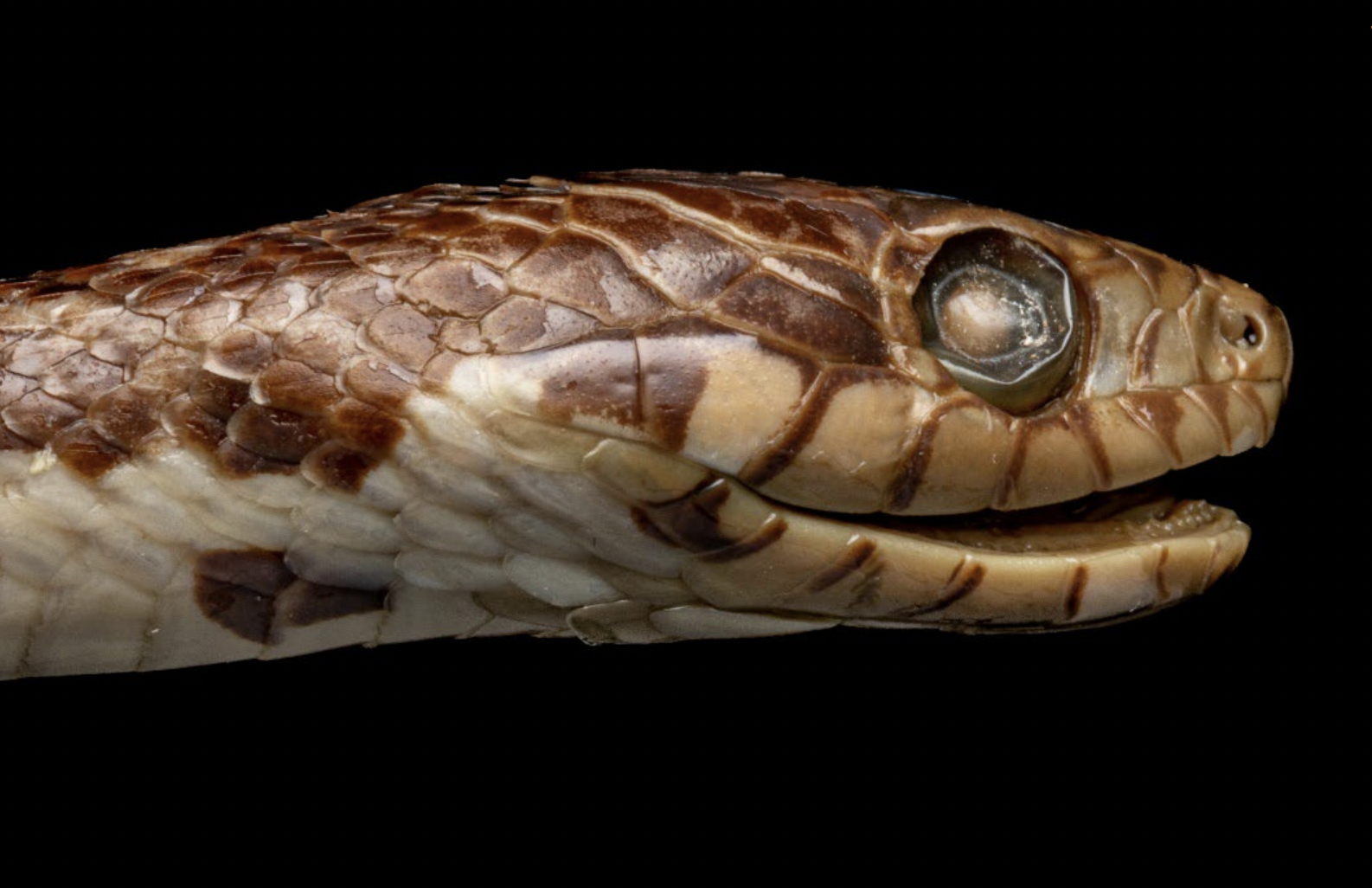Photographers rediscover rare snake not seen in S'pore for 64 years, publish 1st ever photos of live individual
The species was believed to be locally extinct.

Two photographers "herping" — the act of searching for amphibians or reptiles — were in the vicinity of Upper Seletar Reservoir on Oct. 12, 2024.
Little did they know that their jaunt to the Lorong Banir stream would very well mark a momentous occasion for species documentation both in Singapore and the world.
Mysterious snake
Hamad Azam and Trin Chantong, both of whom only started photographing reptiles as early as 2023, were walking through the swamp forest habitat at around 11:30pm that day.
 Photo courtesy of Hamad Azam
Photo courtesy of Hamad Azam
The pair were scanning the stream and vegetation for any telltale hints of scales and slithery creatures, when Chantong spotted a snake's head sticking out of the plants over the water.
A closer look immediately left both with some doubt and uncertainty, they told Mothership.
This snake in particular, with its bright colouration and distinctive markings, was like nothing they had ever seen before.
 Photo courtesy of Hamad Azam
Photo courtesy of Hamad Azam
They concluded it was a species of keelback, and though still unsure, settled on the snake being a spotted keelback, a species they had seen and photographed many times.
"Even then, we knew the colour pattern was nothing we've seen before. We came up with several guesses, even mentioning Hebius petersii, the Peters' keelback, but concluded it was an odd morph of the spotted keelback," Hamad said.
"We were very sure that it was not a spotted keelback," Chantong added.
 Photo courtesy of Hamad Azam
Photo courtesy of Hamad Azam
Mysterious no more
A friend who also went down to photograph this mysterious snake subsequently reached out to Law Ing Sind, local snake expert and the co-founder of the Herpetological Society of Singapore.
After comparing it with an existing specimen in the Lee Kong Chian Natural History Museum, it seems that the doubts Hamad and Chantong had were well founded.
 Photo from "Nature in Singapore" journal
Photo from "Nature in Singapore" journal
Law and several others concluded that the cryptic fellow the pair sighted was indeed the Peters' keelback, a species that had not been seen in Singapore in 64 years.
According to a biodiversity record published in the "Nature in Singapore" journal on Nov. 29, only four specimens have been collected in Singapore, with the fourth being collected in 1960.
The species was thus believed to be locally extinct.
 Photo from LKCNHM / FB
Photo from LKCNHM / FB
Photos of the snake captured by Hamad, which he shared on the Singapore Wildlife Sightings Facebook page, are also the first photographs ever published worldwide of a live individual.
The species is, as Hamad said, criminally understudied.
Google searches of "Hebius petersii" yield few results and even fewer photos.
Aside from Singapore, it can be found in Malaysia and Indonesia as well.
 Photo courtesy of Hamad Azam
Photo courtesy of Hamad Azam
Hope for other undiscovered species
Hamad described the entire experience, from sighting the snake, to its identification, as "euphoric" and a "rollercoaster of emotions".
"When I realised the snake I was looking at did not have the features of a species I initially identified it as. I will never forget those goosebumps where I went 'oh my god guys, this is big'."
He added that others have been envious of the sighting too.
"It still feels unreal being one of the four people in Singapore to have seen the snake with our own eyes. We are constantly reminded of it too, like when I get envious of a friend's sighting in Malaysia and he replies 'I more jealous of your Peter' or comments of that sort."
Chantong echoes similar sentiments and recalls feeling a "flurry of emotions".
However, both men state that the rediscovery of this species has also highlighted the need to conserve what remaining green spaces there are in Singapore.
"I fear for the further survival of this species. Keelbacks are a species that love to live near streams, and are extremely specialised. This means they require specific microhabitats in order to thrive," Chantong said.
Yet, there is also hope.
"It is the hope that if such a species, thought to be extinct since the 1960s, is still clinging on, there may be possibilities of other species still surviving under the radar," Chantong added.
 Photo courtesy of Hamad Azam
Photo courtesy of Hamad Azam
As Hamad wrote in his Facebook post: "We still have so much to protect, so much to be passionate about, so much to fight for."
"The rediscovery of Hebius petersii constitutes a significant addition to the herpetofauna of the Nee Soon swamp forest area," the biodiversity record stated.
"This finding underscores the critical importance of safe-guarding and protecting our last remaining swamp forest where other significant discoveries and rediscoveries have been made. It also highlights the need for further research to be conducted in the swamp-forest."
Nee Soon Swamp Forest is Singapore's last freshwater swamp forest habitat.
It is closed to the public to protect the biodiversity from disturbance.
This is not the first time new species have been recorded in the area.
Top photo courtesy of Trin Chantong and Hamad Azam
MORE STORIES




















